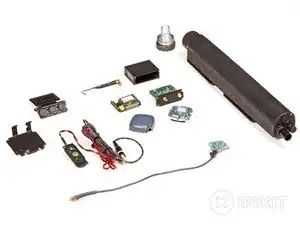
Tracking Device Teardown
Questi sono alcuni strumenti di uso comune usati per lavorare su questo dispositivo. Potrebbe non essere necessario ogni strumento per ogni procedura.
A vehicle tracking system uses automatic vehicle location, a means for automatically determining and transmitting the geographic location of a vehicle. Tracking systems also contain software that collects fleet data for a comprehensive picture of vehicle locations. Modern vehicle tracking systems generally use GPS (Global Positioning System) or GLONASS (Global Navigation Satellite System) technology for locating vehicles. Vehicle information can be viewed on electronic maps via specialized software or the Internet. In large cities, urban public transit authorities are common users of vehicle tracking systems.
Vehicle tracking systems are classified as either “passive” or “active.” Passive devices store GPS location, speed, heading, and trigger events such as door open/close and key on/off. When the vehicle returns to a predetermined point, the tracking device is removed and the data is downloaded to a computer for evaluation. Active devices collect the same information as passive tracking devices but transmit the data in near-real-time via cellular or satellite networks to a computer or data center.
Modern vehicle tracking devices usually combine both active and passive tracking abilities. When a cellular network is not available, the device stores data to internal memory and transmits the stored data to the server when the network becomes available again. Historically, vehicle tracking devices are installed in a box, which is then placed into the vehicle and is either self-powered with a battery or wired into the vehicle’s power system.